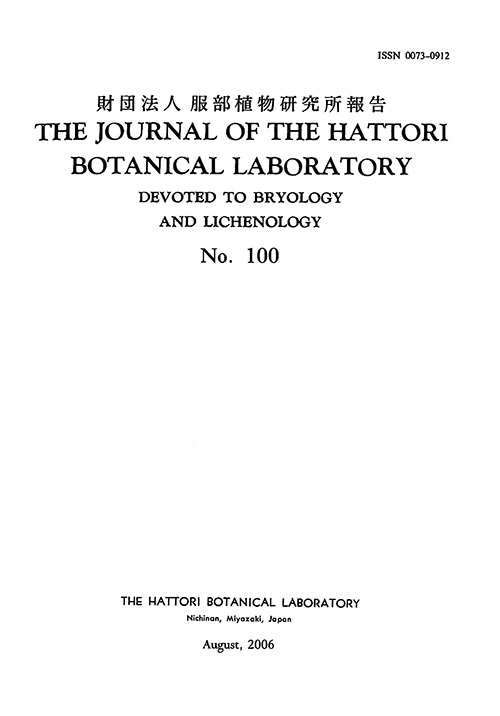99 巻
選択された号の論文の13件中1~13を表示しています
- |<
- <
- 1
- >
- >|
-
2006 年 99 巻 p. 1-106
発行日: 2006/01/20
公開日: 2018/09/19
PDF形式でダウンロード (43833K) -
2006 年 99 巻 p. 107-183
発行日: 2006/01/20
公開日: 2018/09/19
PDF形式でダウンロード (32764K) -
2006 年 99 巻 p. 185-195
発行日: 2006/01/20
公開日: 2018/09/19
PDF形式でダウンロード (4549K) -
2006 年 99 巻 p. 197-205
発行日: 2006/01/20
公開日: 2018/09/19
PDF形式でダウンロード (3650K) -
2006 年 99 巻 p. 207-232
発行日: 2006/01/20
公開日: 2018/09/19
PDF形式でダウンロード (11676K) -
2006 年 99 巻 p. 233-244
発行日: 2006/01/20
公開日: 2018/09/19
PDF形式でダウンロード (5021K) -
2006 年 99 巻 p. 245-257
発行日: 2006/01/20
公開日: 2018/09/19
PDF形式でダウンロード (5699K) -
2006 年 99 巻 p. 259-269
発行日: 2006/01/20
公開日: 2018/09/19
PDF形式でダウンロード (4213K) -
2006 年 99 巻 p. 271-274
発行日: 2006/01/20
公開日: 2018/09/19
PDF形式でダウンロード (1623K) -
2006 年 99 巻 p. 275-295
発行日: 2006/01/20
公開日: 2018/09/19
PDF形式でダウンロード (9361K) -
2006 年 99 巻 p. 297-305
発行日: 2006/01/20
公開日: 2018/09/19
PDF形式でダウンロード (3696K) -
2006 年 99 巻 p. 307-318
発行日: 2006/01/20
公開日: 2018/09/19
PDF形式でダウンロード (4786K) -
2006 年 99 巻 p. 319-342
発行日: 2006/01/20
公開日: 2018/09/19
PDF形式でダウンロード (9909K)
- |<
- <
- 1
- >
- >|
